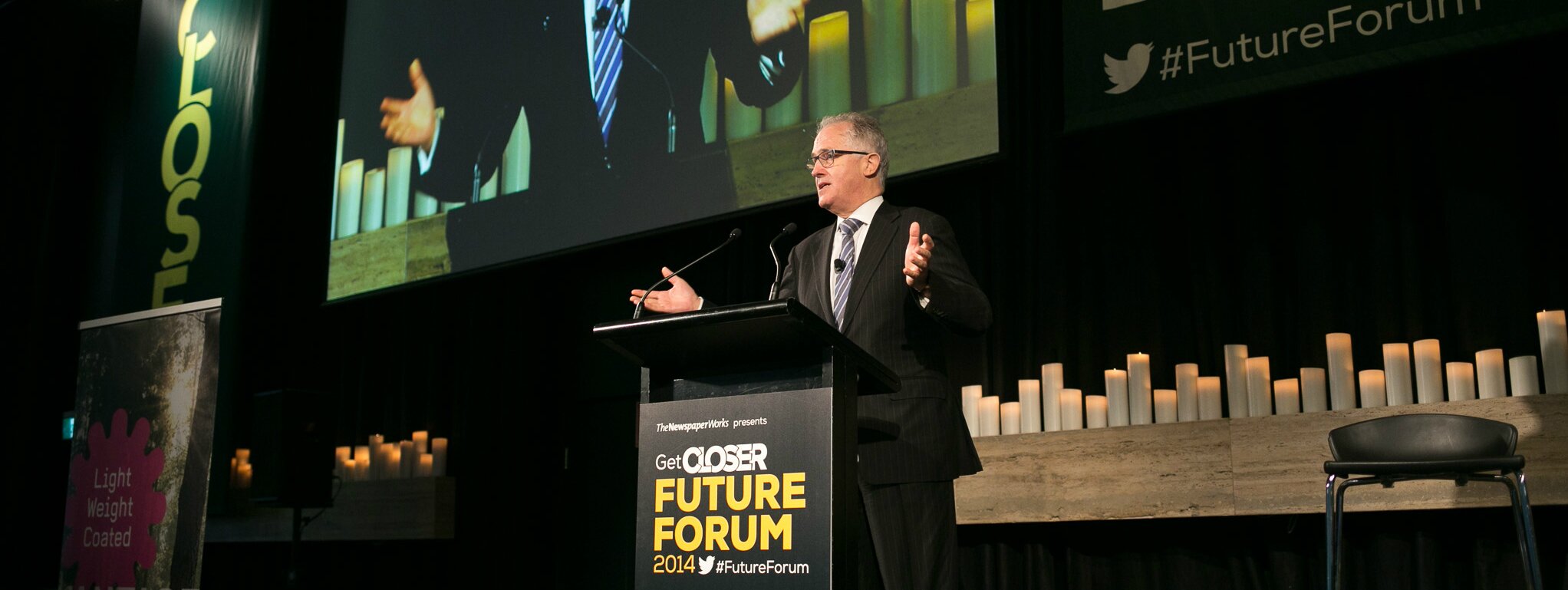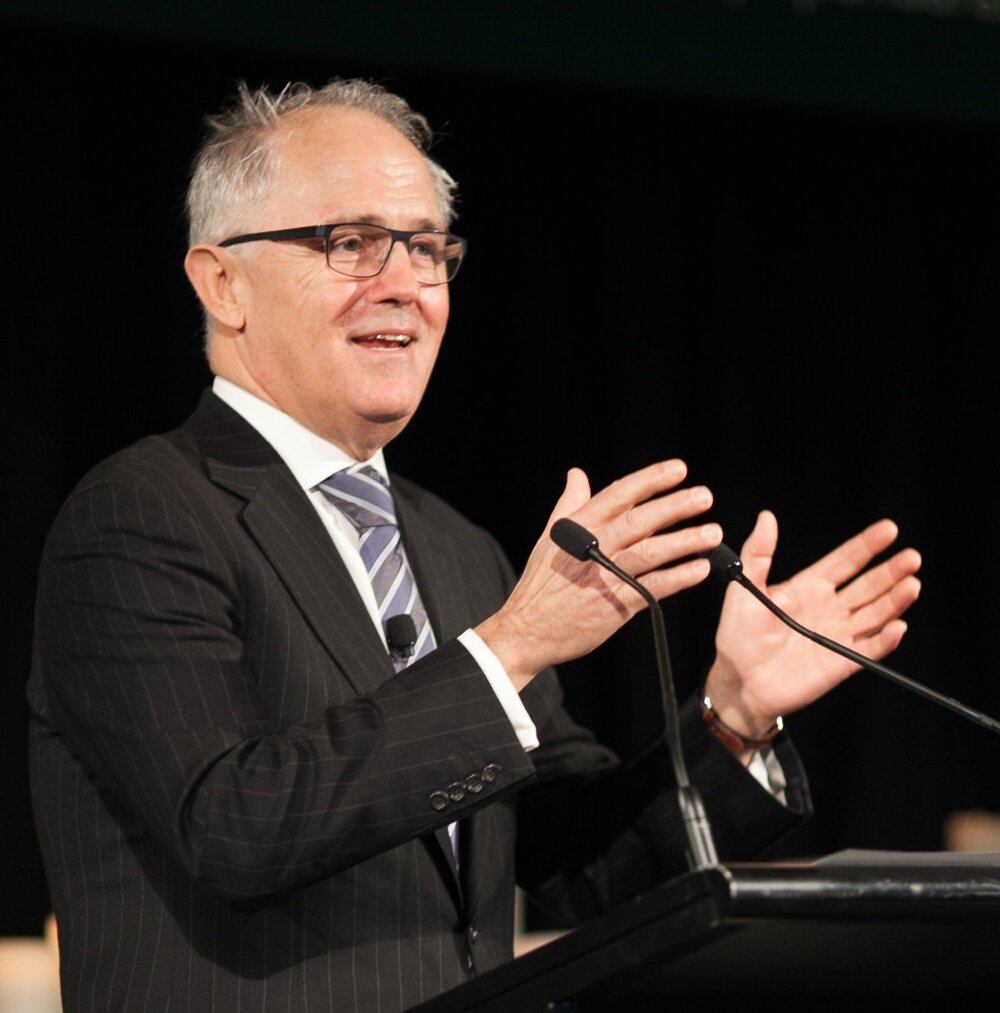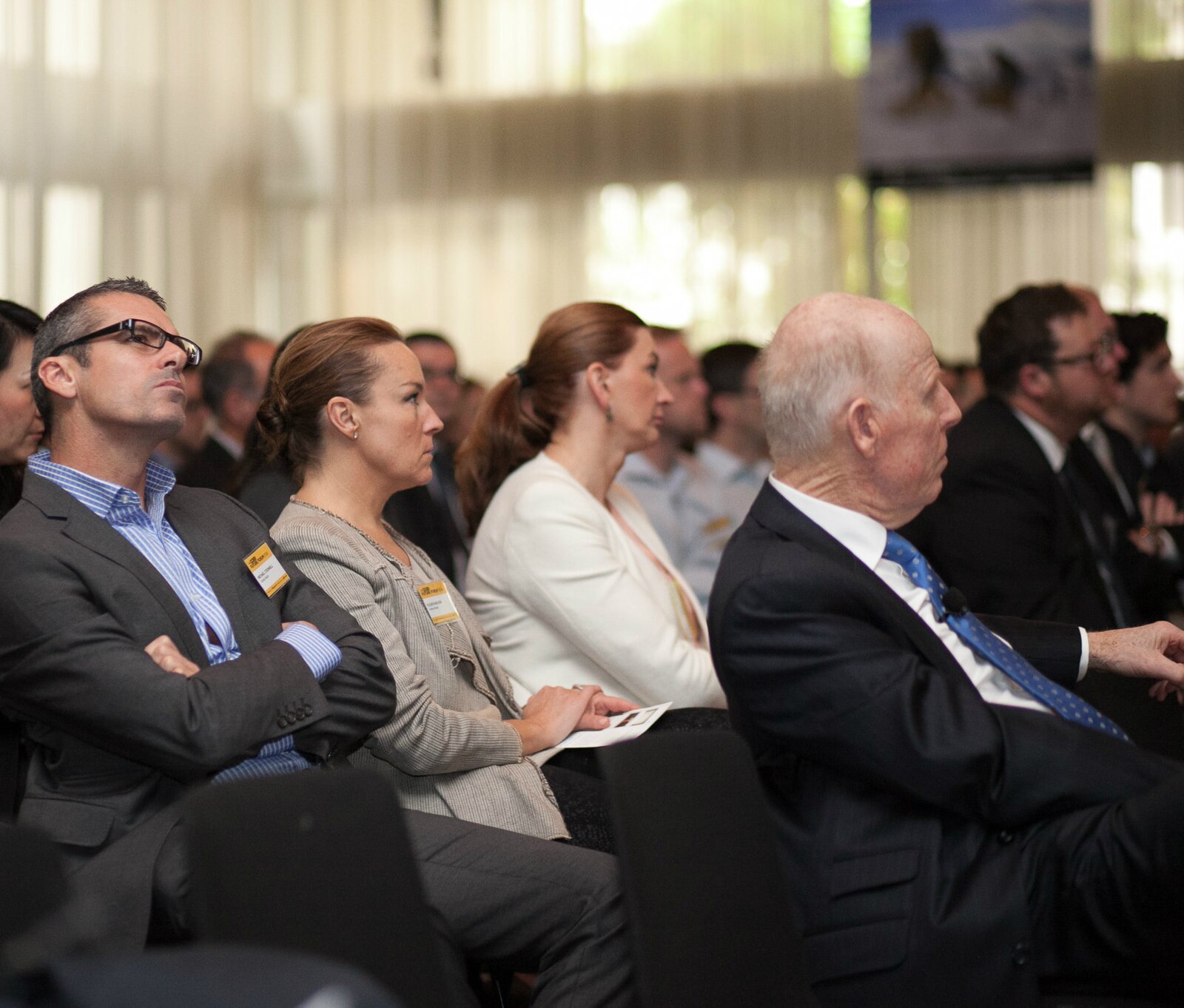
Malcolm Turnbull speaks at Sydney’s newspaper Future Forum
Communications minister Malcolm Turnbull is backing journalism as critical to Australia’s democracy and ‘our free way of life,’ but is ambivalent about whether it comes from digital or print.
At the newspaper Future Forum in Sydney, Turnbull spoke up for the plight of print, saying it is “still very much valued as an advertising platform and as a way of reading the news,” but it is important to recognise “the change to digital.”
The minister quoted Mary Meeker’s State of the Internet address, pointing out that print earns 19 per cent of industry revenue while taking in just five per cent of media consumption time.
He also spotlights a sound bite from Robert Thomson, chief executive of News Corp, saying “print is a concentrated, intense reading experience, with a unique ability in our digitally distracted age.”
The minister was more comfortable using his own words in describing the rise of digital newspaper figures; he says Australian publishers have arguably been ‘ahead of the curve’ in adopting and embracing new business models, and have seen success in growing subscription rates.
He says, “People have never read our major publishers’ journalism more – you have never been as influential as you are today. The problem is that the revenues do not match the influence.
“Think about it. Print readership is down by four per cent, digital readership up by 11 per cent. Media companies are increasingly using new tools to deliver on their mission, which is to inform, to entertain, to tell important stories.”

Malcolm Turnbull, Communications minister
At Fairfax, he says, there are now 140,000 digital-only subscribers to The Age and The Sydney Morning Herald, and both titles have more digital subscribers for Monday to Friday than subscribers to the physical paper.
News Corp also has more the 200,000 digital subscribers and plans to relaunch its paywalls in the near future, while The Australian has reached 64,000 digital subscriptions despite doubling its weekly price to $6.
Turnbull says, “PWC are forecasting industry-wide digital subscription revenue to grow ten-fold to 2018, with around 6.1 million Australians paying for a digital subscription.
“Today’s newsrooms are looking more and more like Silicone Valley start-ups. The barriers to entry have never been so low for competitors, nor has competition ever been so intense.”
Despite acknowledging consumers’ general unwillingness to pay for newspapers, with each printed copy sold in Australia passing through three and a half sets of hands, and competition with digital editions, Turnbull advises newspapers to raise their cover prices.
He says, “The experience internationally has been that once you lose the least loyal customers the remaining market is relatively inelastic when it comes to price for print.
“I am pleased that The Australian and The Herald have both raised their cover prices by 30 cents to $3.30 on their weekend editions. I think there is still a lot of opportunity there.”
He acknowledges the difficulties of adapting to the shift to digital, and says companies must learn to be nimble to seize the opportunities in today’s market.
He says, “All of that volatility is an opportunity, but it demands of us enormous nimbleness. We cannot allow ourselves to be bound by the culture of ‘not invented here,’ or, ‘we have always done it this way.’ We have to be prepared to almost reinvent our world every day.
“It seems to me that the biggest challenge, in terms of transformation, is the cultural change in organisations. It is often underestimated how hard it is to change the mindset of hundreds or thousands of employees who have been used to doing things in a particular way.

Future Forum, 2014
“I think the critical thing is to be nimble, like the best footballer, who can pivot, go left or right, accelerate, twist, turn, respond to the circumstances of the time.”
Deregulation by the Department of Communications may lead to further changes in the media landscape, with moves afoot to scrap rules that only allow ownership of two of the three major platforms (newspapers, radio or television).
However, Turnbull says the industry needs to work more closely to reach a stronger level of consensus on the issue.
The 75 per cent rule, which precludes any network from covering more than 75 per cent of the country, is also under fire.
He says, “We released a deregulation roadmap in May, setting out our priorities for the communications sector.
“We have achieved savings already in the order of $30m a year for media and telco businesses during our first repeal day, and we are well on the way to repeal another layer of regulation at the second repeal day in late October.”
Turnbull says the government aims to support ‘strong and vibrant’ local news while dismantling regulations that may be barriers to innovation.
He also says a free, profitable press is essential to Australian society.
He says, “The truth is that our democratic institutions, our free way of life, depends on you and your prosperity.
“You have in your hands many challenging issues but in your work it is not just the shareholders and the staff whose futures are at stake, it is democracy itself.”
GO TO MORE AUSTRALIA NEWS Print News | Packaging News | Wide Format news | Print | i-grafix | Australia, New Zealand and Asia Print and Packaging news from Australia, New Zealand and Asia
Print News | Packaging News | Wide Format news | Print | i-grafix | Australia, New Zealand and Asia Print and Packaging news from Australia, New Zealand and Asia

